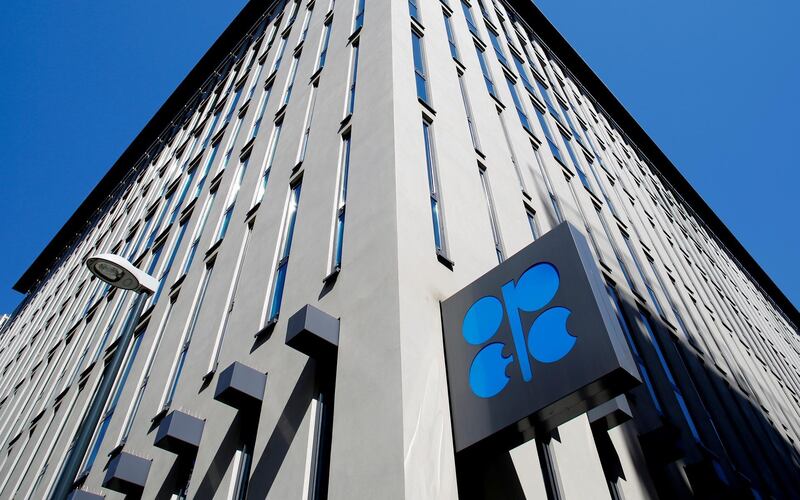Opec lowered its output to the lowest level in nearly three decades as it enforced record production cuts to counter a crunch in demand due to the coronavirus pandemic.
Members of the exporters’ group cut production by 1.93 million barrels per day to 22.69m bpd in June, according to Bloomberg data.
Saudi Arabia volunteered additional cuts alongside key Gulf Opec producers, taking its overall production to the lowest level seen since the Gulf War in 1991.
The kingdom cut an additional 1m bpd in May and June to compensate for the group’s laggards. The world’s largest oil exporter cut back 4.8m bpd in total, bringing its production to a record low of 7.492m bpd in June.
The UAE, Opec’s third-largest producer, committed to additional cuts of 100,000 bpd while Kuwait volunteered to draw back an additional 80,000 bpd.
The group, alongside non-member producers led by Russia, who form part of the Opec+ alliance are drawing back a record 9.7m bpd from the markets since May. The pact, which was initially in place for two months, was extended until the end of July to help rebalance the markets battered by the collapse in demand due to the coronavirus pandemic.
"Compliance with Opec production cut targets improved in June with the aggregate level of compliance at over 100 per cent,” Emirates NBD said in a note on Thursday.
"Saudi Arabia over delivered as expected, providing almost 140 per cent of what it was expected to cut while the UAE and Kuwait both achieved around 100 per cent. But there was significant improvement from Iraq and Nigeria, two countries singled out for failing to hit their targets in May.”
Iraq’s compliance improved to 70 per cent from 42 per cent a month earlier while Nigeria reached 77 per cent compared with 47 per cent.
Opec+ convened virtually in April at the peak of the crisis when the pandemic brought air and ground transportation to a sudden halt and caused a sharp decline in prices. The month also saw the West Texas Intermediate benchmark collapse below zero to trade briefly at -$40 per barrel as sellers ran out of storage options.
Last week, Opec secretary general Mohammad Barkindo called the day when WTI collapsed into negative territory ‘Bloody Monday’.
The oil markets are not “out of the woods” yet, he said, adding that the industry would have headed to a “total crush” if Opec+ had not intervened.
Crude prices collapsed by nearly 70 per cent in April from their most recent peaks in January as countries around the world imposed movement restrictions to contain the spread of the virus.
Oil demand was estimated to have shrunk 29m bpd in April, the lowest level since 1995, according to the International Energy Agency. The UAE energy minister Suhail Al Mazrouei called the collapse in demand "the single largest shock to the world economy” last week.
Opec+ is maintaining its production curbs through April 2022 in a tapered manner.
Oil prices, which gained from the collective Opec+ action as well as the pick-up in demand due to the easing of movement restrictions, gave up their gains in recent weeks. The benchmarks registered two weeks of losses as Covid-19 infections crossed the 10 million mark and many countries saw a rise in new cases.
Brent was up 0.62 per cent at $42.29 per barrel, while WTI was up 0.70 per cent at $40.10 per barrel at 1.35pm UAE time.
Oil prices are likely to trend at the $40 per barrel range from "rebounding demand and declining shale output", said Norbert Rücker, head economics and next generation research at Julius Baer.
"[We] see higher prices in the longer term, as rebounding demand and constrained supplies should soon lead to an easing supply glut," he said.
Prices could average "closer to $50 than $60 per barrel" long-term, which will support the revival of the shale business, he added.








